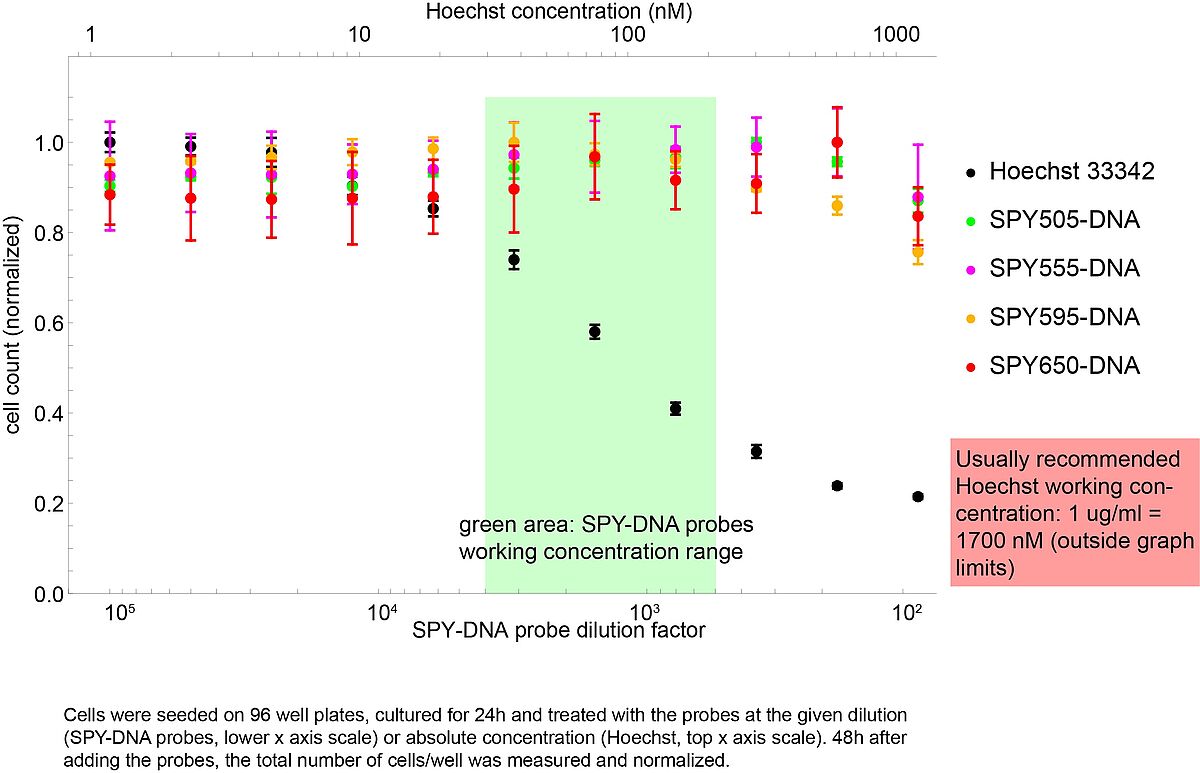SPY-DNA probes are a better alternative for Hoechst dyes
The are numerous advantages to using SPY-DNA when compared to classical Hoechst, in particular for long term imaging.
- The wavelength used to excite Hoechst (ca 450 nm) is highly phototoxic and induces cell death. SPY650-DNA uses far-red excitation (Cy5 filters or settings) which is much more gentle for the cells.
- Hoechst itself has a strong cytotoxicity, even without illuminating the cells. This cytotoxicity strongly increases with the Hoechst concentration used.
Consider the toxicity assay shown on the right. Different dilutions of SPY-DNA probes (green/red/pink/yellow dots) were compared with different concentrations of Hoechst dye (black dots) and cell survival was measured. Toxic effects of Hoechst appear at 50 nM, well below the typical recommended concentration of 1700 nM (1 ug/ml). SPY-DNA probes show no toxicity in the working dilution window (green area).

